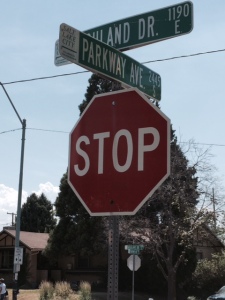I was recently visiting the website for Reading Rockets (1) and noticed that they had posted ten things that teachers and parents need to know about reading. What caught my eye was a reference to Marilyn Adams and her 1990 book, Beginning to Read: Thinking and Learning about Print (2). I had the opportunity to work on some beginning reading initiatives in the state of Utah and nationally back in the late 1990s and early 2000. We used this book by Marilyn Adams as basic information for many of the decisions that were made. I particularly like how Reading Rockets summarized one of Marilyn’s analogies:
Reading is a complex process that draws upon many skills that need to be developed at the same time. Marilyn Adams (1990) compares the operation of the reading system to the operation of a car. Unlike drivers, though, readers also need to:
- Build the car (develop the mechanical systems for identifying words)
- Maintain the car (fuel it with print, fix up problems along the way, and make sure it runs smoothly)
- And, most importantly, drive the car (which requires us to be motivated, strategic, and mindful of the route we’re taking)
Cars are built by assembling the parts separately and fastening them together. “In contrast, the parts of the reading system are not discrete. We cannot proceed by completing each individual sub-system and then fastening it to one another. Rather, the parts of the reading system must grow together. They must grow to one another and from one another.” (Adams et al., 1990, pp.20-21).
The ultimate goal of reading is to make meaning from print, and a vehicle in good working order is required to help us reach that goal (3).
We adults who have been reading for years forget how complex learning to read can be for a child. One thing we know is that when children are learning to read, it is essential for them to make connections between reading and the world around them. Recognizing what is printed in the environment is key. We look for familiar street signs, signs on the fronts of businesses that are familiar (think McDonald’s), labels on food and products, menus, magazines, newspapers, etc. The list is quite endless. One thing we also know is that many struggling readers don’t comfortably make that connection. A child that is challenged by on-level reading needs more support in environmental print. Drawing attention to print in the environment should not end when the child can read some words.
Here is a list of ideas that families can use to help their struggling readers make a strong connection between reading and life:
1. When driving around, ask the child to look for a sign that indicates the direction you need to go. For examples, “We need to exit the highway at Exit 25. Would you please watch for me and let me know when you see the sign that says ‘Exit 25?’” or, “We need to turn on Parkway Avenue. Would you keep watching and let me know when you see Parkway Avenue?
2. When planning a trip to the grocery store and market, give the child a paper and pencil and have her write down the shopping list as you dictate. Then have the child find the items at the grocery story.
3. Implement the old standard of writing thank you notes when gifts are received. Writing is tied directly to reading, so when a child writes, it can be a strong reinforcement for reading strategies. My own children didn’t want to write thank-you notes at first because they didn’t think any of their friends did it. But, when it became a routine, it was easy to implement. And, it did help develop their reading and writing skills.
4. Instead of using the installed voice in a navigation system, have your child be the navigator (if his skills make that a possibility). Have the child enter the address information and then verbally explain the course that the navigation system suggests. Hint: You might want to check out the information beforehand so that you can be sure not to get lost. Don’t tell your child that you already know the path.
5. Have a yard sale or some other kind of sale. (I had a friend whose children sold rocks last year. I know, sounds crazy. But, they made $30.) Have your child create a list of the inventory to be sold and the price of each item (blue rocks 25¢, red rocks 50¢, etc.)
6. Pick up some commercial games that require reading and writing. I particularly like to play Pictionary with my grandkids. They must read the cards carefully or they will draw an incorrect item.
Children who struggle with reading need lots of practice, but it is better when it is not perceived as practice. Turning reading into fun and engaging activities will help your child be willing to participate in the reinforcement of reading. There are many activities families can do to help their children. The list above contains a few suggests that you may not have thought of as a means for reading support.
Additional information about environmental print:
1. http://www.readingrockets.org/article/environmental-print
2. Adams, Marilyn Jager. Beginning to read: thinking and learning about print. Bradford Books, CO. 1994.
3. http://www.readingrockets.org/article/top-10-things-you-should-know-about-reading
http://www.readwritethink.org/resources/resource-print.html?id=954
